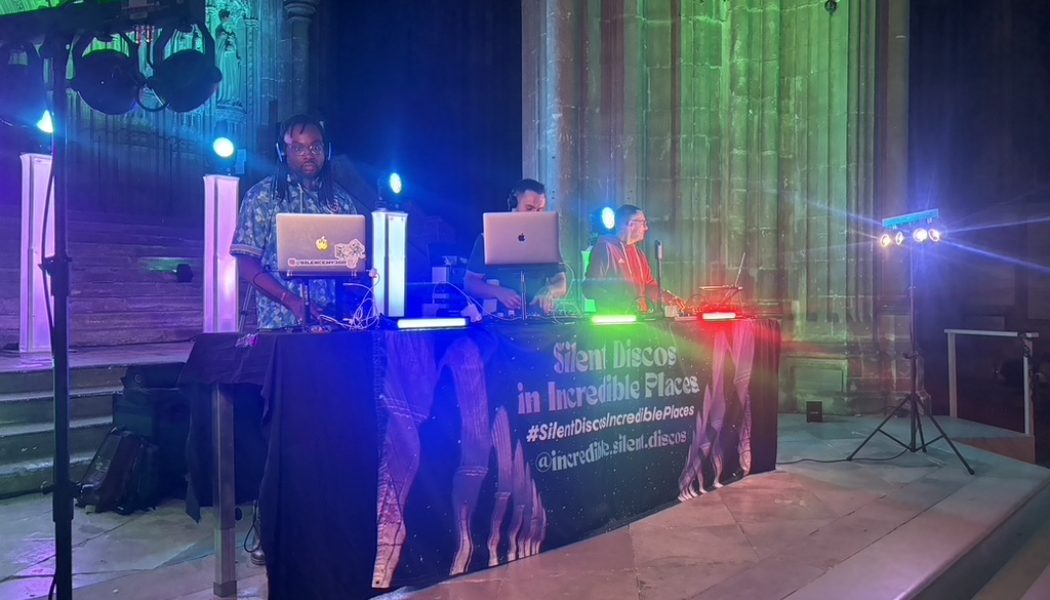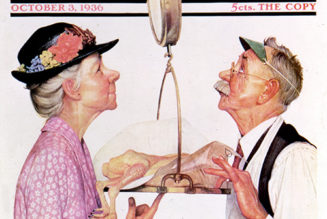CANTERBURY, England — One cannot help but be overawed when entering Canterbury Cathedral, whose origins date back to St. Augustine of Canterbury, the Benedictine monk sent by Pope St. Gregory the Great to evangelize the English in 597.
Perhaps most famous for being the hallowed site of St. Thomas Becket’s martyrdom in the 12th century and the focus of countless pilgrims, including Geoffrey Chaucer, author of the famous Canterbury Tales, the cathedral’s vaulted Romanesque ceiling lifts your eyes and spirits to the heavens just as its architects had intended.
The cathedral’s majestic quire, situated behind a magnificent 14th-century stone rood screen lined with the statues of English kings, is home to the Chair of St. Augustine, in which archbishops have been enthroned since the 13th century.
Leading to the cathedral’s farthest east point is the Corona, named after the severed crown of St. Thomas Becket, whose shrine it was built to contain. There lies the resting place of Cardinal Reginald Pole, the last Catholic archbishop of Canterbury.
And yet for two evenings last week all this revered history was set aside as 3,000 revelers entered through the cathedral’s great West Door — an entrance usually restricted to kings, queens, archbishops and civic leaders — to join a disco in full swing.
As someone who was born and raised in Canterbury, and attended a school in the cathedral precincts, I was shocked at the sight I beheld, one that I and many of my contemporaries would scarcely have imagined.
Strobe lights lit up the nave with colors of the rainbow as three DJs stood behind their computers at the foot of the rood screen, playing music to the bopping partygoers through their wireless, neon-lit headphones.
This was a so-called “Silent Disco,” one of many being held in cathedrals up and down the country and billed as a chance to “have fun” in “special places” without necessarily causing a noisy disruption — and to raise money for their upkeep.

It involves dancing not to Christian music, but to rock and pop music from recent decades — in this case the 1990s, and so songs from artists such as Eminem, Britney Spears, Elton John and the Spice Girls.
Cocktails in the Nave
Squeezing past revelers as they swigged cocktails purchased from makeshift bars in the nave just yards away from where St. Thomas Becket was brutally slain in defense of the faith and the Church, I made my way up through the heaving crowd. As songs played silently through their headphones, the partygoers would occasionally chant well-known song lyrics that jarringly reverberated from the cathedral’s hallowed arches and balustrades.

Outside the cathedral’s medieval front gate, around 20 faithful — mostly Catholics but also some Orthodox, evangelicals, Anglicans and even some atheists and agnostics — had gathered in the pouring rain but in good spirits to protest against the nicknamed “Rave in the Nave” with prayers, hymns and reading of Holy Scripture.
“It’s about protecting a sacred space from sacrilege,” said Dr. Cajetan Skowronski, a young Catholic physician from the nearby county of Sussex who organized the prayer vigil. “It’s a very misguided move by custodians of the cathedral who should know better than to be using it in this profane way.”
He told the Register that he and the protesters had “nothing against people enjoying themselves in nightclubs, but this is a cathedral, a place of prayer.” In the same place where St. Thomas Becket’s “brains were spilled on the floor,” he added, “someone is going to spill a rum and coke tonight. It’s really quite an awful thing to consider.”
St. Thomas, martyred in 1170 by four knights who believed they were carrying out the will of King Henry II during a dispute over Church and state, became greatly revered in England in the Middle Ages. Thousands of pilgrims would travel miles to venerate his relics at a cathedral shrine that was later destroyed by King Henry VIII during the Reformation.

Chris, 41, a Catholic university professor taking part in the vigil, said he found the disco “very saddening,” given the cathedral’s venerated sacred history.
“This is a complete cheapening of all the value which is there,” he told the Register, adding that he believed the story of Jesus driving out the merchants and moneychangers from the Temple was “absolutely” applicable here. “It’s a prime example of what he would do,” he said, “and maybe, because we’re not doing it, we’re being cowards.”
Daniel, 65, an evangelical Protestant from London who left the Church of England last year because of its decision to bless same-sex unions but refused to become a Catholic because he felt Rome was going the same way, said the disco was a “terrible desecration” and was “leading people astray.”
“I don’t know what’s got into the Church of England to think this is okay,” he said. “I pray for them. I believe what they’re doing is terribly wrong. Sadly, I think those behind this are going to be judged very severely and will go to hell if they don’t repent of their sins. This is a very grave sin, I think, like blasphemy or idolatry.”
Two atheists also joined the prayer vigil because they disapproved of the disco.
“The cathedral is a place for quiet contemplation and so I personally don’t think it’s appropriate for a disco,” said Mia, 25, who lives just outside the cathedral gate. “They are pointlessly trying to subvert the religious aspect and could have raised funds another way,” she added. “It’s needlessly controversial, and I feel for Christians who are upset about it.”
Her boyfriend Alfie, 29, also an atheist, agreed, saying, “There’s a time and a place for these kinds of things, and they shouldn’t be in a cathedral.”
For many of those attending the disco, it seemed a harmless event. “I’ve been to silent discos before and they’re really good fun,” said Kerry from nearby Ashford. “They put on functions in my local church to raise money for the upkeep of the building and it’s like that — I don’t think it’s disrespectful,” she said. “People aren’t taking drugs, shouting or attacking anyone, just singing and having fun, and it’ll be quiet. Also there’s so much misery around for young people, why not let them have fun?”
Dwindling Worshippers, Rising Costs
The tickets cost £25 ($31) each and, with a total of 3,000 people attending the sold-out event, the cathedral will have raised £75,000 ($95,000) minus expenses. The funds will be a welcome addition for the Church of England, which, with ever dwindling members, is struggling to fund the upkeep of its cathedrals. Canterbury’s alone costs about £20,000 ($25,000) a day.
The dean of the cathedral, Rev. David Monteith, said in a statement before the event that cathedrals “have always been part of community life” and whatever reason draws people to the cathedral, “it’s always joyous to see them discover this incredible place anew on their own terms.” He cited Scripture, 2 Samuel 6, when the Bible speaks of King David dancing before the Lord, observing that “there are many different views on the secular and the sacred.”

Skowronski had also organized a petition that drew 1,600 signatures, which he presented to the dean before the event. “While respectful of our right to protest, the dean was dismissive of our petition, stating that we were an extreme minority,” he told reporters. “Rev. Monteith was convinced — with no evidence — that the majority of Christians would support this disco, and our petition and reasoned arguments could not change his mind.”
In a Feb. 11 post on X, Skowronski said the Canterbury Cathedral disco was just the “tip of the sacrilegious iceberg” and that the Church of England is “making almost all our sacred cathedrals into a chain of profane nightclubs,” with discos planned in 12 cathedrals from now until the end of May. “The desecration will not stop unless we resist,” he wrote.

Cathedral Canon Wendy Dalrymple, speaking to the protesters, argued that if Stravinsky or other such composers could be performed there, then why not pop music? But she was unwilling to speak to the media, and press accreditation was extremely limited. The cathedral’s press spokesman was unwilling to speak on the record, and the dean declined to comment about the strong reaction. A Register request for comment from Archbishop of Canterbury Justin Welby also went unanswered.
Catholic Churches Not Immune
The Catholic Church is also not immune from such events. Just before Christmas, veteran American rock singer Patti Smith performed “peace” concerts of her own music in the cathedrals of Modena, Siena and Naples, Italy. The Italian Catholic daily La Nuova Bussola Quotidiana has also catalogued other incidents of misuse and desecration of churches in Italy in recent years.
In 2019 Cardinal Christoph Schönborn of Vienna was criticized for allowing LGBT activists to use the city’s St. Stephen’s Cathedral for events, one of which featured a shirtless actor “known for playing homosexual roles standing on the altar rail, loud rock and electronic music, and actors dressed as demons.”

Commenting on these events to the Register, La Nuova Bussola Quotidiana Editor-in-Chief Riccardo Cascioli said he believes they are a symptom of a “serious crisis of faith affecting the entire Christian world, including Catholics.”
“People no longer know what churches are and what their purpose is,” he said. “It is a sign of a Christendom that, unable to bring the world to God, is chasing after the world. It is an unconditional surrender to secularization, one that is even accepted as a positive phenomenon.”








